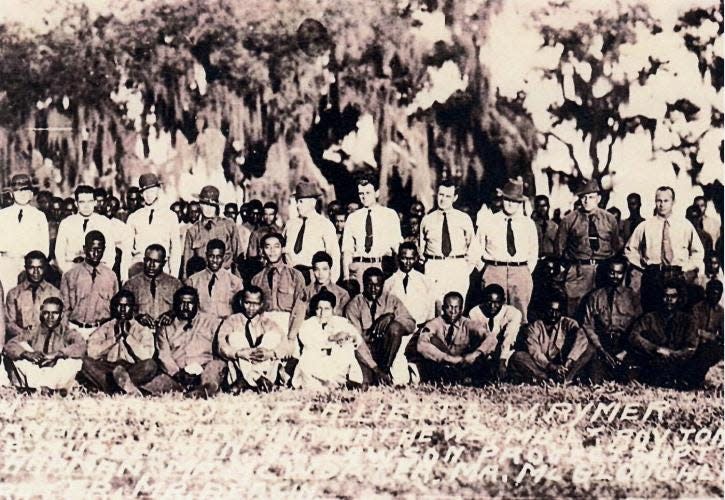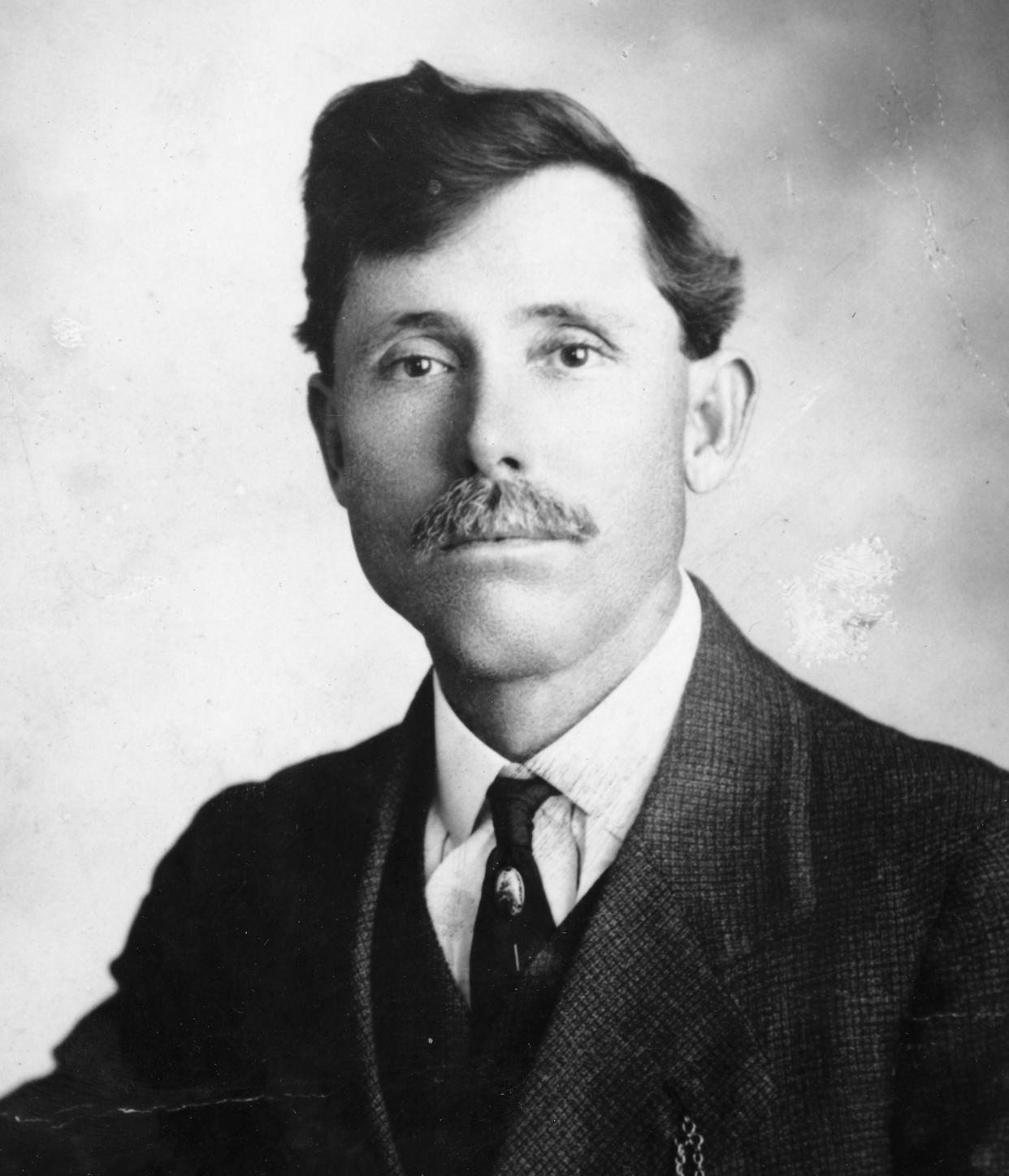Sarasota History with Jeff LaHurd: ‘Roosevelt’s Tree Army’ built Myakka River State Park

You do not have to drive too far to escape Sarasota’s madding crowd, the traffic circles, the long lines, the plethora of high-rise buildings, the search for a parking place, et. al.
Treat yourself to a break from all the frenetic craziness. Take the short drive to the Myakka River State Park, a peaceful reminder of a now long-gone “old Florida.” A day trip there is akin to stepping into the tranquility of a Clyde Butcher wildlife photograph.
What had formerly been a ruggedly forbidding area has been transformed into an accessible yet still wild plethora of melded sights and sounds and creatures too often squashed in Sarasota by rampant development. An oasis of Mother Nature’s beauty.

Myakka River State Park is one of the largest and most beautiful parks in Florida. It is filled with with moss-festooned oak trees, canopied trails and an abundance of brightly colored tropical foliage. Its huge lake is teeming with gators and fish. Indigenous birds line the shore, foraging in and around the lake for food.
All of this is augmented by some modern conveniences for both campers and day-trippers, among them: an informative airboat ride on the majestic lake; a restaurant (how many places can you order fried gator?); camping and fishing supplies for sale; bicycle, kayak and canoe rentals; and lavatory facilities.
In the mid-1930s when the area was being reclaimed, C.H. Schaeffer, director of the Florida Park Services, assured that it would become “one of Florida’s outstanding tourist attractions, a source of joy, value and pride to every citizen.”
The Sarasota Herald wrote that the “Myakka Park is [the] realization of [a] cherished wish. Planned for several years by some of the prominent businessmen of the city, (it) will be one of the show placers of Florida when completed and opened.”

The park was a dream come true for local men A.B. Edwards, Sarasota’s first mayor, and Judge Paul Albritton who helped spearhead the complicated effort.
According to the Herald, the Palmer family, through Potter and Honore’ Palmer, donated nearly 30,000 acres of the primitive territory to the state park service. Chicago Society Queen and Sarasota booster Bertha Palmer, the family matriarch, often went to the area for rest and relaxation inspired by nature’s beauty.
Inviting northern visitors for a look-see, the Herald spoke of the “moss draped splendor of the majestic oak trees, the ever-green palmetto, and the bright hued flowers all in a background of dense tropics [which] defy adequate description ... no sight is more breathtaking than the acres of massed water hyacinth in full bloom.”
In the 1930s Sarasota with the rest of America (and the world) had fallen on hard times. The Great Depression put 25% of America’s work force out of jobs. Sarasota, which a few years earlier was booming came to a suffering standstill, facing a bleak future.
President Franklin Delano Roosevelt brought the Federal Government to bear. The “alphabet” programs of his National Recovery Act (NRA) instituted the Works Progress Administration (WPA) offering employment for the down and out. In Sarasota, prominent WPA-built structures included the Post Office building on Orange Avenue and the beachfront Lido Casino, along with the Civic Center and its centerpiece Municipal Auditorium.
More Sarasota history
Anglers, tourism, and the Silver King of local waters
Sarasota’s torn down a lot of its past. Here’s what’s still standing
For younger Americans, ages 18 to 25, the Civilian Conservation Corps (CCC) – aka “Roosevelt’s Tree Army” or “Soil Soldiers” – was created with an executive order on April 5, 1933. This was an answered prayer to the young men who participated, as well as their parents, to whom $25 of the $30 monthly wage was sent home to a grateful family.
The camps were run by Army Reserve Officers and operated along the lines of a military base. Rise at 6 a.m., a half-hour to clean up and dress in their spruce green uniforms for roll call. At 6:30, the young men gathered for the raising of the flag. Breakfast was served at 7. At 7:45 the barracks were inspected and the day’s assignments were handed out. Lunch at noon was followed by four more hours of laborious work and a return to the barracks. At 6 p.m. the flag was lowered, followed by dinner and free time.

According to a page on the Florida State Parks website, “Legacy of the CCC at Myakka,” when the day’s chores were finished, many of the men fished, participated in sports or hiked the trails they had established – and then it was bedtime.
On Saturday night, the camp held dances to which Sarasota’s young women were invited. According to the site, also available to the young men, “The enrollees could attend free, optional job training classes where they could learn skills such as welding and carpentry. Literacy and arithmetic were a main concern of CCC administrators, and literacy levels for enrollees soared thanks to the program.”
Their work was rigorous, especially during the sweltering months of summer. Workers contended with hordes of mosquitoes, rattlesnakes, alligators and other wild animals.

Working only with their hands and rudimentary tools, the men paved the main road, built the sturdy timber bridges, strung telephone lines, cleared the trails and constructed log cabins, the park manager’s residence and the visitors pavilion.
The Sarasota Herald reported park rangers throughout the state applauded the accomplishments of the corps: “The value of the work being done by the CCC in Florida cannot be overestimated. Creating an efficient forest protection program is one of the state’s major needs at this time.”
The paper noted, “They come out of their camps with good habits, in the best of health for some useful pursuit.” Despite back-breaking work which would imply weight loss, the young men actually gained an average of 12 pounds of muscle.
At a time when too many American citizens were standing in soup lines, and rationing food at home, CCC men were given three hearty, well-balanced meals a day.
Many considered the Civilian Conservation Corps to be one of the most successful of Roosevelt’s New Deal programs. During its nine years of existence the young CCC men planted more than three billion trees and constructed trails and shelters in more than 800 parks nationwide.
They were reportedly responsible for over half the public and private reforestation done in the nation’s history.
In February 1941, the hard-won Myakka River State Park officially opened to the public. The needs of World War II put an end to the CCC, many of whose strong and disciplined members made excellent soldiers.
If you take a drive there, leave your cellphone in your car. Immerse yourself in the primitive delights the park offers, and remember that more than 80 years ago, this was left to you by a group of hardworking young men who served themselves, their families, and their country. An everlasting treasure from the greatest generation to you. Thank them by enjoying the fruits of their labor.
Jeff LaHurd was raised in Sarasota and is an award-winning historian.
This article originally appeared on Sarasota Herald-Tribune: Jeff LaHurd: How the Great Depression gave us Myakka River State Park
